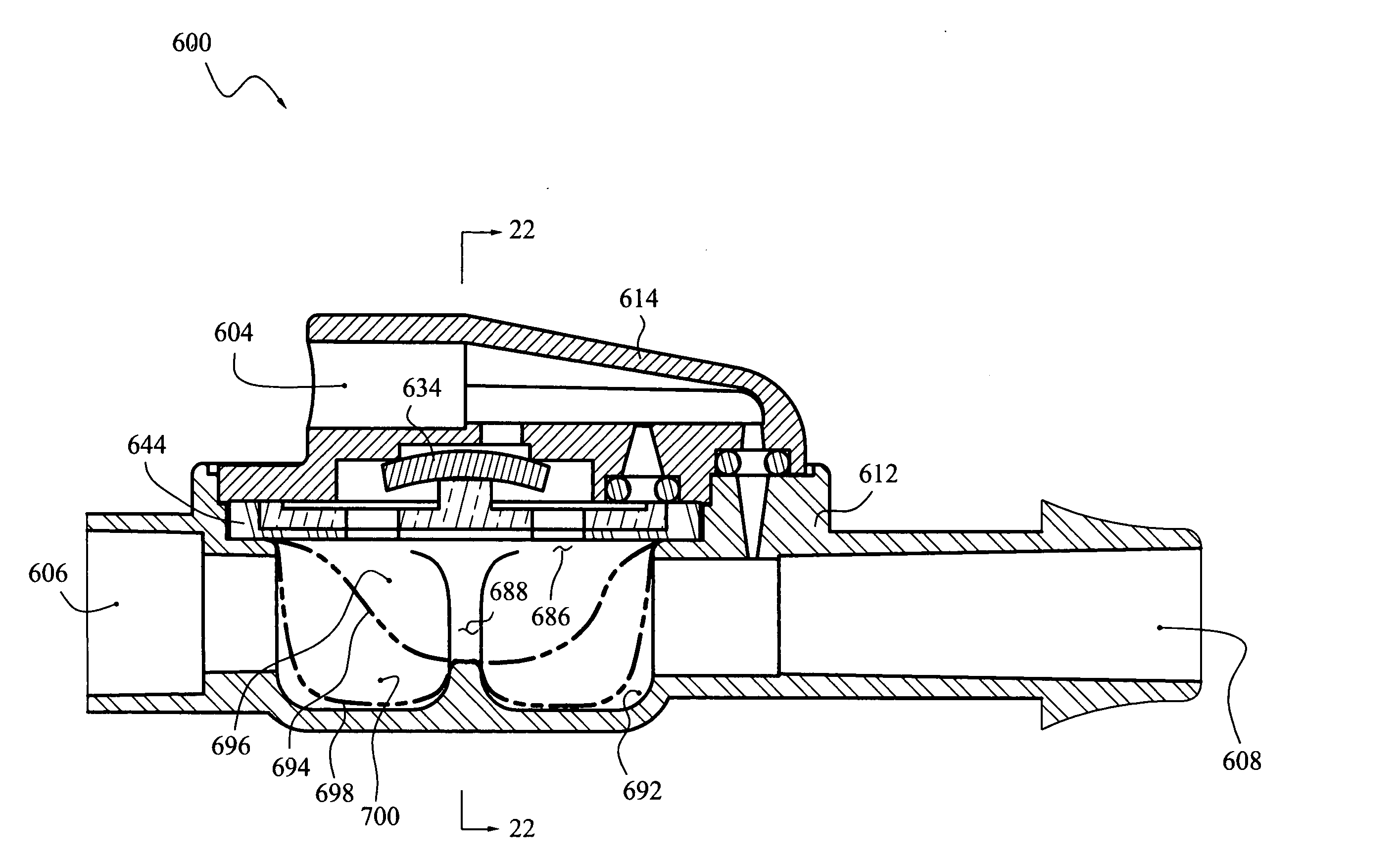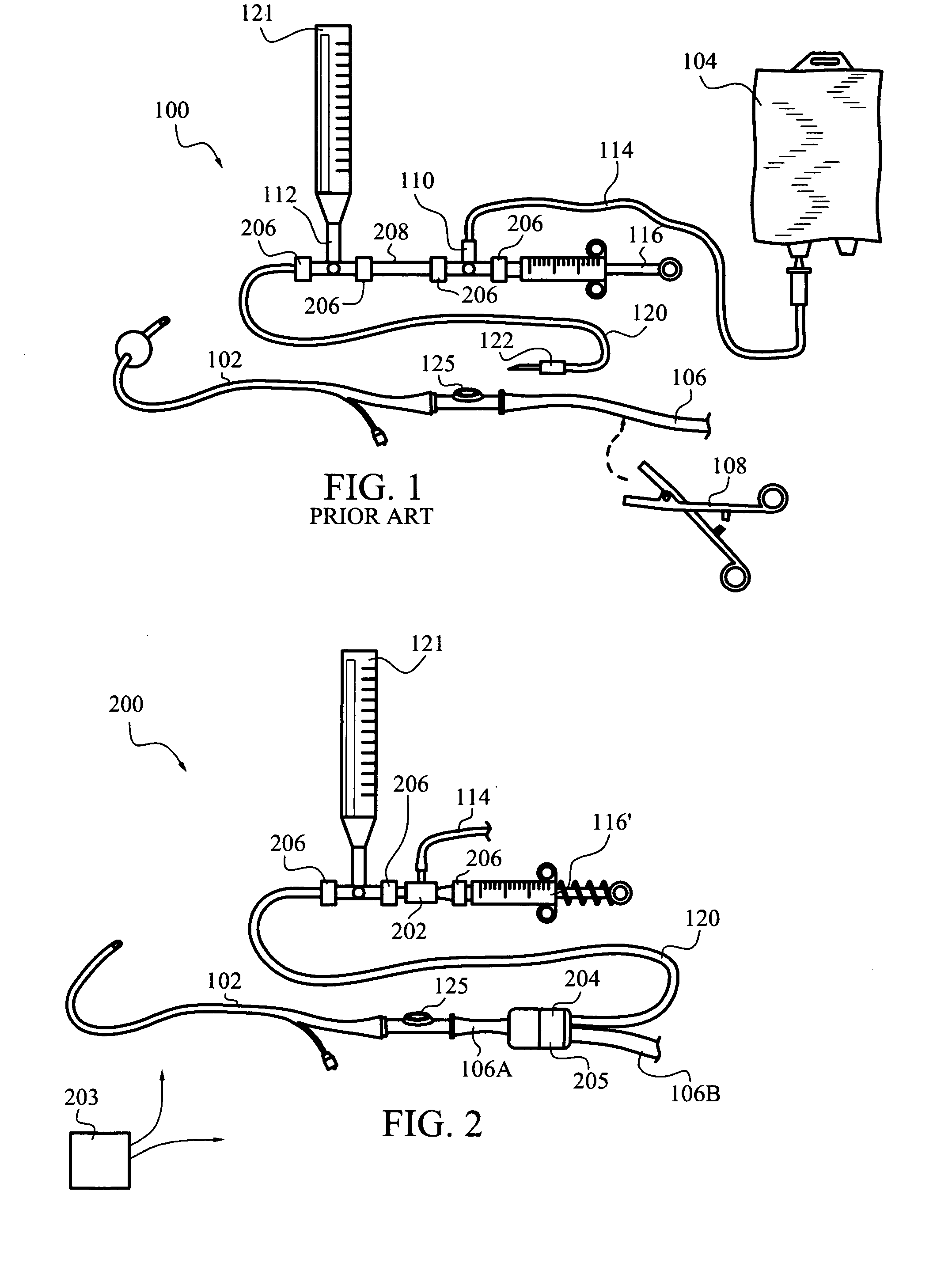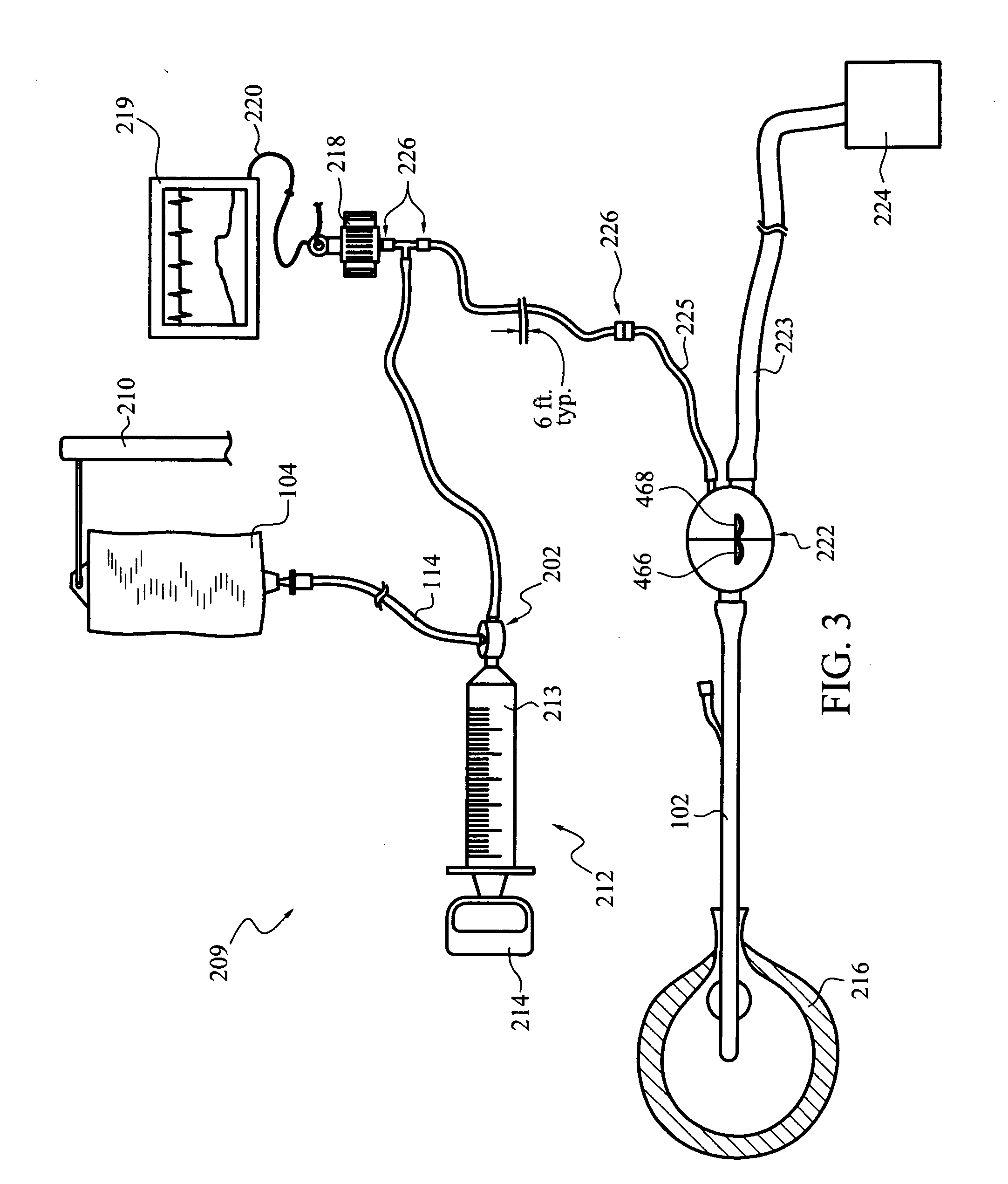Medical valve and method to monitor intra-abdominal pressure
- Summary
- Abstract
- Description
- Claims
- Application Information
AI Technical Summary
Benefits of technology
Problems solved by technology
Method used
Image
Examples
Embodiment Construction
[0051]FIG. 2 illustrates an exemplary embodiment, generally indicated at 200, of an apparatus for measuring trends in a patient's intra-abdominal pressure. The assembly 200 includes a fluid supply conduit 114 with one end in fluid communication with a sterile saline or other fluid source (not illustrated). Conduit 114 desirably is connected at a second end for fluid communication with an automatic, direction-of-flow control device 202 to urge fluid flow through conduit 120 in a direction toward a patient. A hydraulic pressure in conduit 120 is measured by a pressure transducer, such as transducer 121.
[0052] As illustrated in FIG. 3, it is sometimes preferred to arrange the pressure transducer in a dead-ended conduit, compared to the flow-through arrangements illustrated in FIGS. 1 and 2. The illustrated arrangement requires a clinician to make only one attachment at the pressure transducer area. However, it should be realized that additional components, such as zeroing stopcocks, m...
PUM
 Login to View More
Login to View More Abstract
Description
Claims
Application Information
 Login to View More
Login to View More - R&D
- Intellectual Property
- Life Sciences
- Materials
- Tech Scout
- Unparalleled Data Quality
- Higher Quality Content
- 60% Fewer Hallucinations
Browse by: Latest US Patents, China's latest patents, Technical Efficacy Thesaurus, Application Domain, Technology Topic, Popular Technical Reports.
© 2025 PatSnap. All rights reserved.Legal|Privacy policy|Modern Slavery Act Transparency Statement|Sitemap|About US| Contact US: help@patsnap.com



